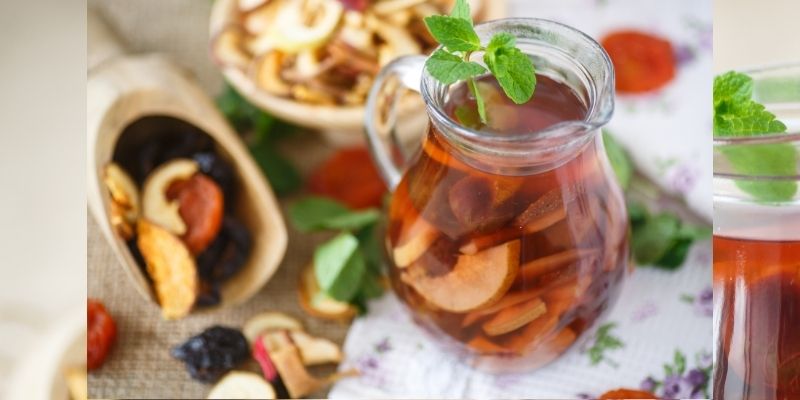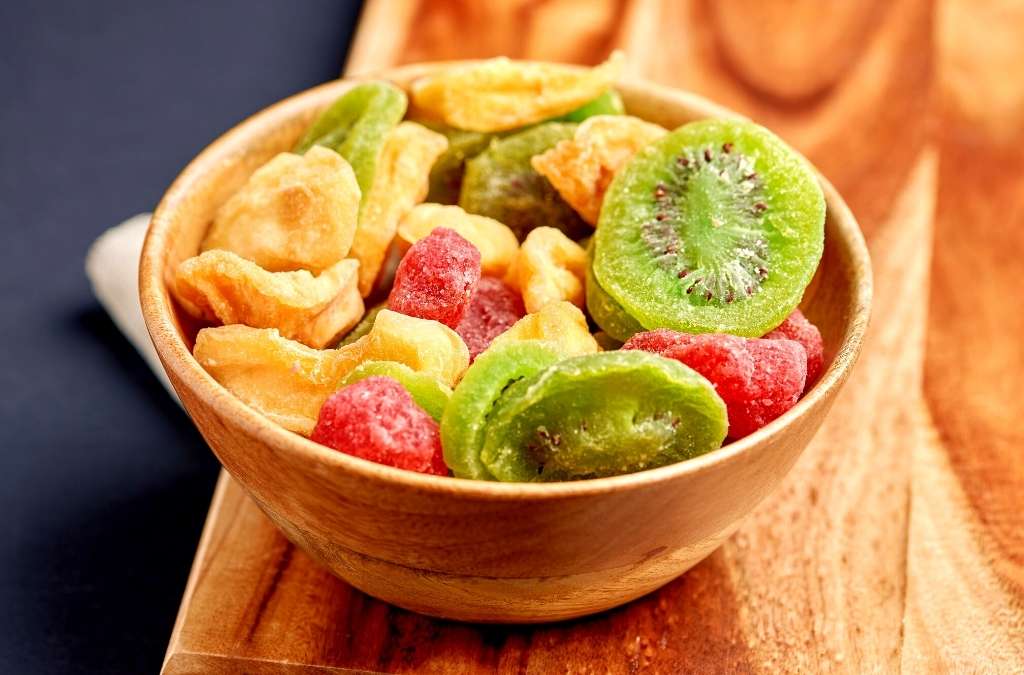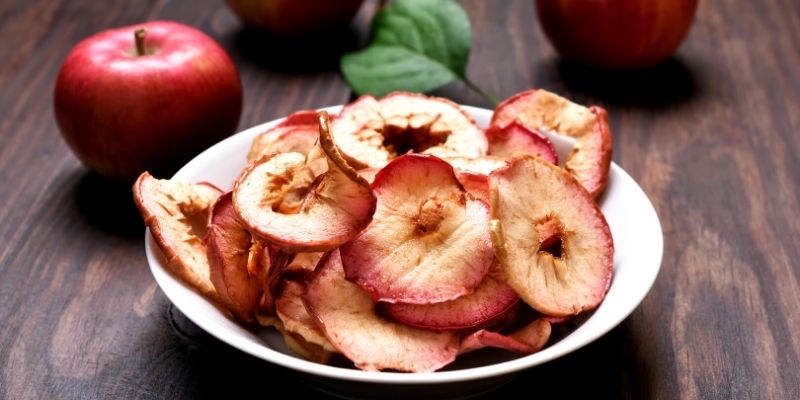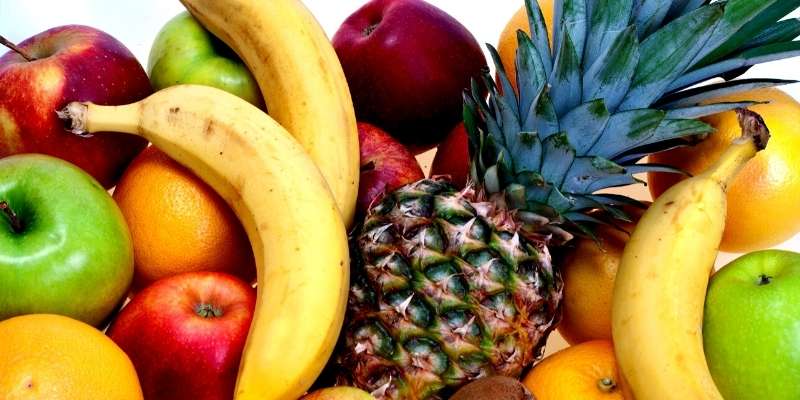A fruit dehydrator is a handy appliance and one of the best pieces of home preserving equipment if you love drying fruits. Dehydrated fruits are one of the healthiest and tastiest snacks to keep at home, especially for kids.
They also serve you well if you are on a backpacking trip or picnic, or even for prepping or homesteading. But, do you know how to dehydrate your fruits at home?
You do not have to spend on overpriced dried fruits from the supermarket. Save money and be healthy and make use of a fruit dehydrator.
The process of dehydrating fruits is fun and truly easy and fills your home with delicious aromas.
Various factors determine the length of time it takes for fruits to dry in a fruit dehydrator. These include the thickness of the slices, the number of trays and the home food dehydrator models.
Quick Content Navigation
Our Top Tips for Drying Fruits In A Fruit Dehydrator
Dehydrating fruits is a fun and easy food preservation process. The best part is creating tasty and healthy snacks for your family.
But, there are many other benefits when drying fruit at home. Not only is your family eating healthier, you can save a ton of money by buying fresh produce in bulk and preserving it.
Also, you get to enjoy the taste of seasonal fruits all year round. The best part here is that dried fruit can easily be re-constituted for pies and tasty desserts.
Simply follow these tips and hack the process.
Pick Ripe and Healthy Fruits for Dehydrating
If you want to get the best results when dehydrating fruits, there is a simple place to start.
You have to ignore the bruised or overripe fruits and go for the healthy and just-ripe ones.
For some fruits, such as bananas and pineapples, you will need to peel the skin before drying. If you choose to leave the skin on apples or stone fruits, wash to remove wax and rinse thoroughly before using your fruit dehydrator.
This step is vital as most fruits are now sprayed with chemicals while growing. They also are often coated with a fine wax to make them “shine” when displayed.
Dehydrate At 135 F Or 57 C
One of the reasons to choose a dehydrator over an oven or sun-drying is that you have precise control over the final product. Also, the process is often automated and the fruit dehydrator can be programmed for temperature and time.
When using an oven for drying fruit you will have to constantly monitor the trays to ensure even drying and prevent fruit from burning.
However, using a dedicated fruit dehydrator will let you set heat and time for different fruit types and thicknesses. Also, if using a square dehydrator, there is no need for tray rotation. Read more about square vs round dehydrators here.
For the record, drying fruit is best done at 135 F or 57 C, and you can regulate the time and temperature when using a dehydrator.
Dehydrate Different Types of Fruits Separately
Different fruits require different times and temperatures to dry thoroughly.
Also, the texture and juiciness of each fruit will determine how long it takes to dehydrate.
For these reasons, you should dehydrate different types of fruits separately to make sure they are properly dried.
In addition, dehydrating separately also means that there is no mingling of flavors from different fruits.
Strong fruits such as bananas and pineapple may give off some of their taste to more bland fruits such as apples if dried in the same batch. Drying separately also helps with the storing process as you can easily put each fruit in a separate jar.
You Can Rehydrate the Fruits Back to Make a Fruit Cocktail
While you can snack on your dry fruits without limitation, you may also rehydrate them back to make a fruit cocktail.
This is also true for pies and other desserts.

Just follow this easy guide:
- Pour a mix of fruits into a bowl or jar.
- Add some cool spring water and allow the dried fruits to rehydrate back to form.
- Enjoy a bowl of yummy rehydrated fruit and a jar of fruit juice to drink. If using to cook, prepare as per the recipe for if you were using fresh fruit.
The Best Fruits to Dehydrate
You can dehydrate many fruits, but some do better than others in terms of taste after being dehydrated and longevity.
For these two reasons, here are some of the most common fruits you can dehydrate.
Apples
To best dehydrate apples, cut into four and remove the core and stems. Then, slice each quarter into thin pieces. To prevent oxidation, which means the slices turn brown, put the apple pieces into the dehydrator immediately.
You can also prevent browning by pre-treating the fruit before dehydrating. Add a tablespoon of pure crystalline ascorbic acid or lemon to a bowl of water and place the fruit into the solution.
After ten minutes, remove the fruit and put it in a dehydrator. You may need to dehydrate apples for 8 to 12 hours depending on the thickness of the slice, how juicy they are and your desired level of dehydration.
Peaches
When dehydrating peaches, there are some choices to make. In our tips, we mentioned that you should choose ripe fruits to dehydrate.
However, ripe and soft peaches take a long time to dehydrate and can be difficult to prepare. As ripe peaches are quite soft, there is often some damage that occurs to the flesh as you try to remove the seed.
Because of this, some people prefer to go for firmer, just-ripe ones. The choice is up to you.
Just remember, the firmer peaches will not be as sweet as those that are ripe. Experiment with different ripeness to see what is best for you!
- Peel the skin, if you want – we personally leave it on as it adds flavor and nutrients.
- Remove the pit and the fibrous parts around it.
- Cut into small pieces and dehydrate for 8 to 12 hours at 135 F.
Bananas
To dehydrate bananas, choose ripe ones but ensure they are still slightly firm and not mushy. Peel, slice into pieces, and put them in a fruit dehydrator.
Before slicing, decide whether you want small slices across the banana or long strips. Dried banana can be made to be crispy, as in banana chips, or chewy for banana strips.
Dehydrate at a temperature of 135 F for 8 to 12 hours, depending on your required level of crispiness.
You can use a poly-screen tray insert to prevent the bananas from sticking to the tray during dehydrating.
Pineapple
The process of dehydrating pineapples is different from those of other fruits mentioned so far. It is a systematic process that requires time and meticulousness.
Start by peeling the skin and removing the core with a coring tool, if you have it. If you don’t, you can remove the core from each piece after cutting the pineapple.
Next, slice into small thin pieces and place onto the fruit dehydrator trays.
Leave the dehydrator on at 135 F for 12 to 18 hours.
Above are some of the best and easiest fruits to dehydrate. However, there are many other fruits that are delicious when dehydrated. Think berries, kiwi fruit, mango (which is fiddly to prepare but very yummy) and papaya. In fact, the possibilities are endless when drying fruit at home.
You may store them in your freezer, fridge or pantry and enjoy these delicacies over several months.
How To Dry Fruits In A Fruit Dehydrator
Dehydrating fruits is one of the fun and easy home food-preserving processes. In fact, for the small effort involved, your whole family will enjoy the yummy snacks and treats you create.
Also, while it is super easy to dry fruits at home with a dedicated fruit dehydrator, you can also just use your regular oven. It is certainly a little trickier but doable.
Simply follow these tips for drying fruit with a dehydrator:
- Wash and dry
- Peel the fruit (if necessary)
- Slice fruits into pieces
- Spray with lemon or pineapple juice as pre-treatment
- Place fruit slices on the dehydrator rack
- Set the time and temperature
- Allow it to cool and become crisp
- Condition the fruit (if you want to store it for a long time)
- Store fruits.
Conclusion
Using a fruit dehydrator allows you to make healthy and yummy snacks at home for the whole family.
Our tips on how to prepare fruit for drying make this a fun and easy process. We even show you how to do this in an oven!
Quickly and easily dry apples, peaches, bananas and pineapple using a fruit dehydrator.
You can check out more excellent tips on our website. Follow the links below to learn other preserving methods like food canning and vacuum sealing.
Vacuum Sealing Will Keep Food Longer
If you enjoyed this article and learned from it, feel free to give us a comment below.




 Hi! I’m Sally-Anne!
Hi! I’m Sally-Anne!